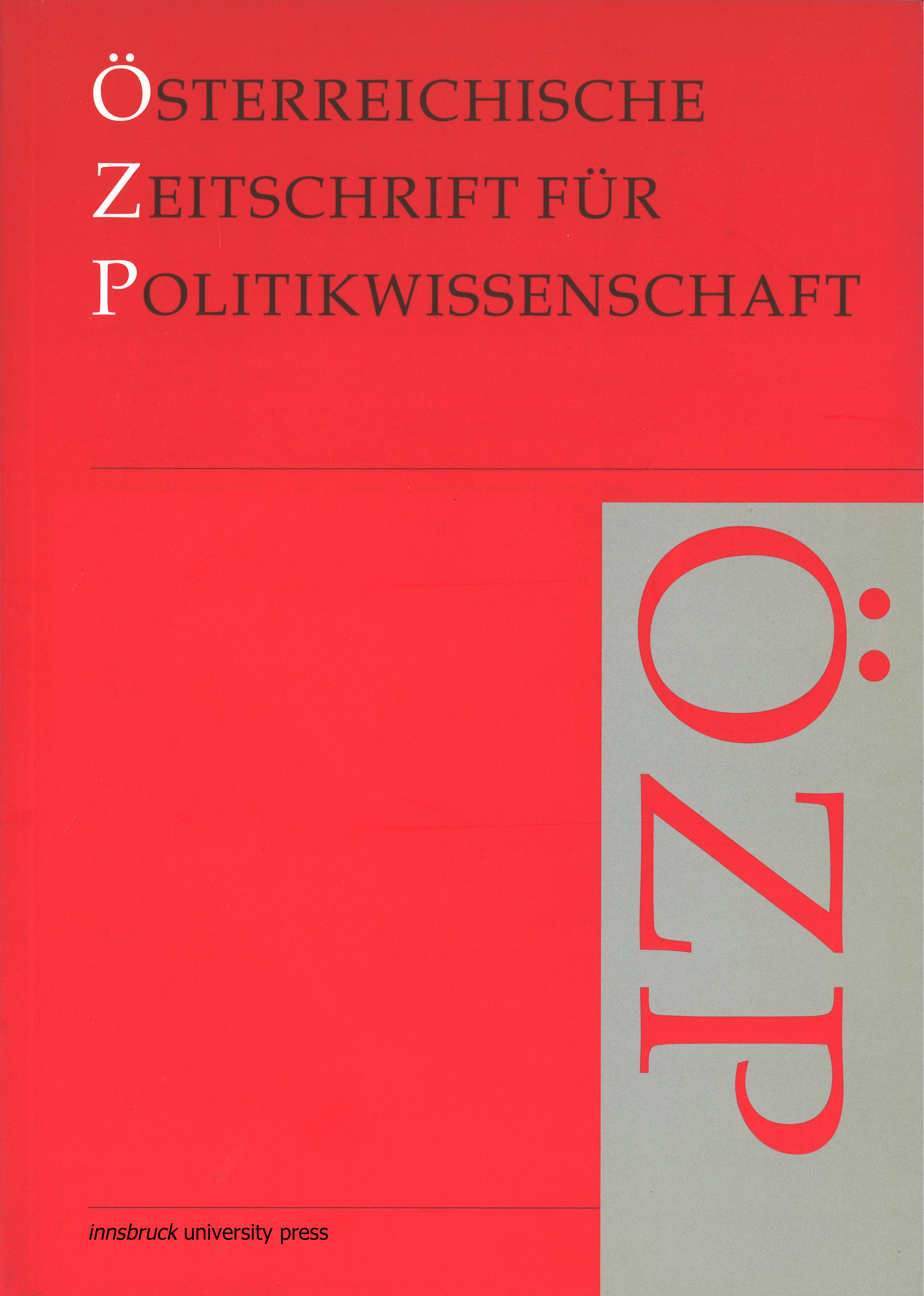Der allgegenwärtige Schatten des Kommunismus im tschechischen Parteiensystem
DOI:
https://doi.org/10.15203/ozp.1903.vol46iss2Keywords:
Kommunistische Partei, KSČM, Kommunismus, Tschechien, Parteiensystem, VergangenheitsbewältigungAbstract
In keinem anderen Land des ehemaligen Ostblocks finden wir eine kommunistische Partei, die gesellschaftlich ähnlich bedeutend ist wie die Kommunistische Partei Böhmens und Mährens (KSČM) in der Tschechischen Republik. Ihre Erfolge und die Tatsache, dass die Partei sich von ihrem Wirken in der Zeit des orthodoxen Kommunismus nie „losgesagt“ hat, sondern darin bis heute eine Quelle der Inspiration für ihre Tätigkeit sieht, macht sie zu einer politischen Anomalie ersten Ranges im Rahmen der gesamten Europäischen Union. Ziel dieser Studie ist es, die grundlegenden Prädispositionen zu definieren, die hinter der Tatsache stehen, dass genau diese Partei, die nach 1989 als antisystemischer Totengräber eines undemokratischen Regimes galt und mit der für die Zukunft niemand mehr wirklich rechnete, bis heute zu den stabilsten Elementen in der tschechischen Politik gehört.Downloads
Published
Issue
Section
License
The OZP is the authorized quarterly publication of the Österreichische Gesellschaft für Politikwissenschaft (ÖGPW, Austrian Political Science Association)
The author of an article (in case of multiple authors: the corresponding author, responsible for releasing this material on behalf of any and all co-authors) accepted to be published in the OZP hereby acknowledges the following Copyright Notice:
- The author retains the copyright to the article.
- It is the responsibility of the author, not of the OZP, to obtain permission to use any previously published and/or copyrighted material.
- Publication of a submitted text is dependent on positive results from the peer reviewing. In such a case, the OZP editors have the right to publish the text.
- In case of publication, the article will be assigned a DOI (digital object identifier) number.
- The author agrees to abide by an open access Creative Commons Attribution (CC BY nc) license. The license permits any user to download, print out, extract, reuse, archive, and distribute the article in any non-commercial way, so long as appropriate credit is given to the author and source of the work.
- The license ensures that the author’s article will be available as widely as possible and that the article can be included in any scientific archive. In order to facilitate distribution, the author agrees that the article, once published, will be submitted to various abstracting, indexing and archiving services as selected by the OZP.
- In addition, the author is encouraged to self-archive the article, once published, with reference to the place of the first publication.
- After the contribution appears in the OZP, it is still possible to publish it elsewhere with reference to the place of the first publication.
- The finished article, if published, will include a correspondence address (both postal and email) of the author.
- If written under the auspices of a grant from one or more funding agencies, such as FWF (Austrian Science Fund), ERC (European Research Council), and Horizon 2020 (EU Framework Programme), an article accepted for publication has to be deposited in an Open Access archive. The OZP’s archiving policy is compliant with these provisions. (In case the article derives on funding from a different source, the author is responsible to check compliance of provisions.)




